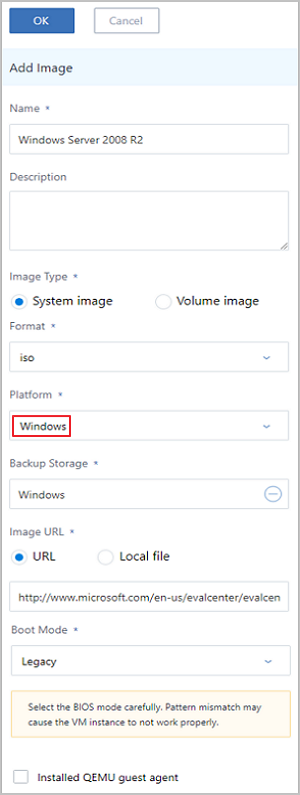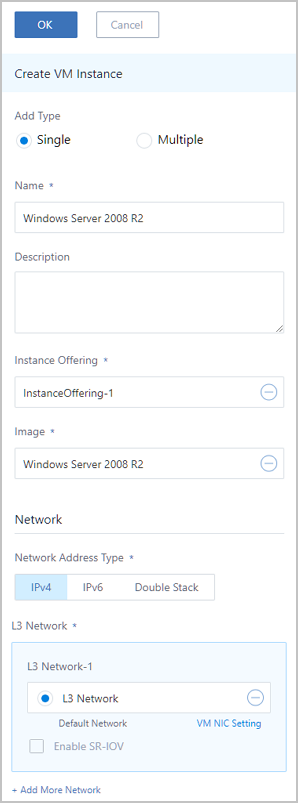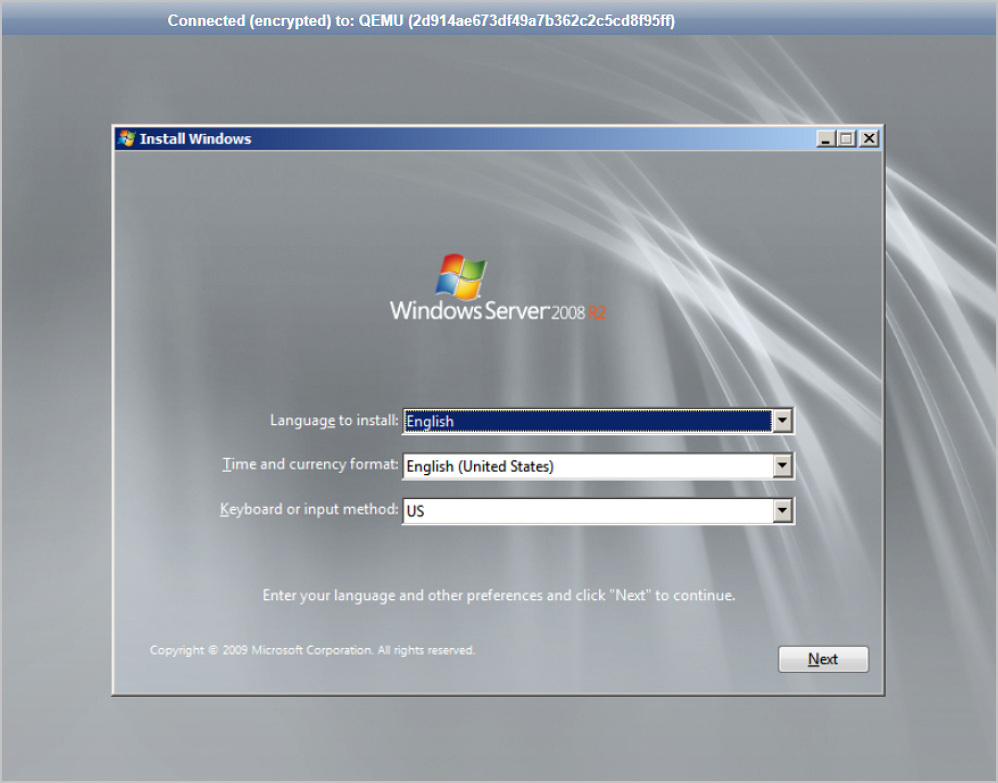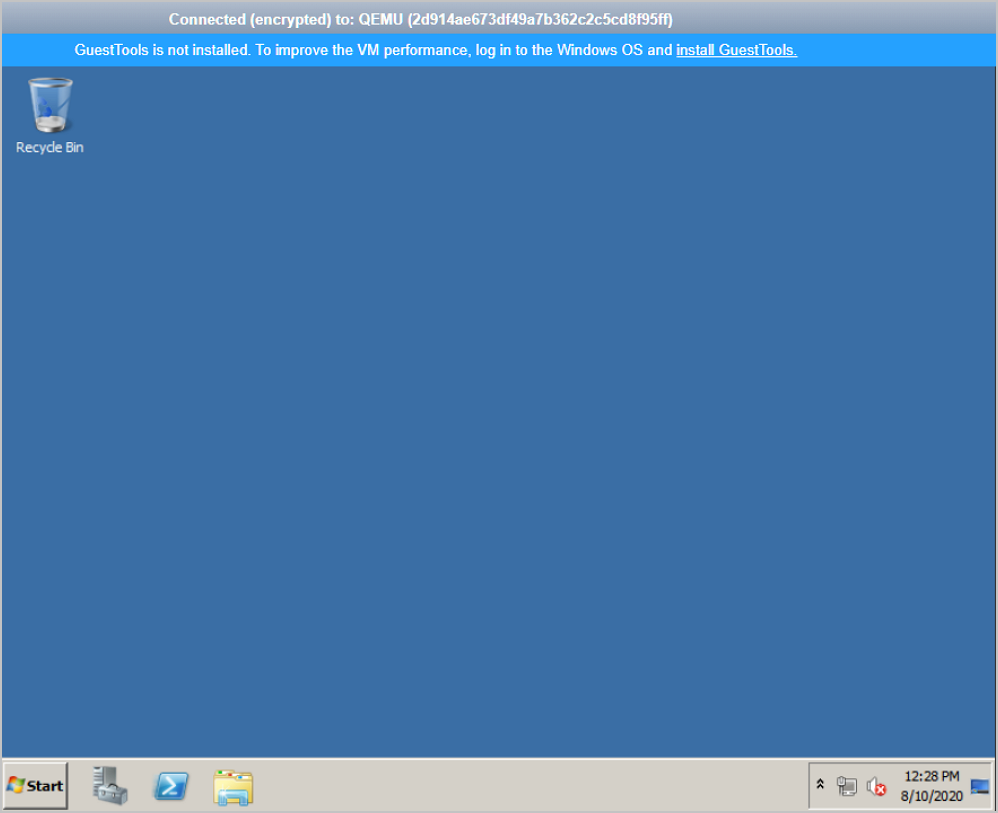- Account Home
- Language
- News
- Products
-
Cases
By Service
- Help & Support
- Partners & Training
- About Us
Create a Windows template on the Cloud.
Take Windows Server 2008 R2 as an example. With this Tutorial, a comprehensive procedure on how to create a Windows template will be introduced.
Add a Windows Server 2008 R2 image to the ZStack image list for installing the operating system.
 Note:
Note:  Note:
Note: 
Shell> fs0: FS0:\> dir FS0:\> cd EFI FS0:\EFI\> cd BOOT FS0:\EFI\BOOT\> BOOTX64.EFI
Create a VM instance and install the operating system for the VM instance by using the Windows Server 2008 R2 image that you added.

On the VM Instance page, select the name of the VM instance, and choose . After you open the console, the installation page of the VM instance is displayed, as shown in Install Operating System.

To configure your own guest operating system, reference to the normal Windows Server 2008 R2. During installation, the guest operating system will be automatically rebooted, which may lead to disconnection of the console. In that case, re-enter the console. After you complete installing the operating system, customize the admin password and log in to the operating system. So far, the Windows operating system is installed, as shown in Complete Installing Operating System.

C:\Users\Administrator> diskpart ::Enter diskpart. DISKPART> san ::View the SAN policy. DISKPART> san policy=onlineall ::Change the SAN policy by using diskpart. DISKPART> exitBack to Top
Email Us
contact@zstack.ioEmail Us
contact@zstack.ioEmail Us
contact@zstack.ioThe download link is sent to your email address.
If you don't see it, check your spam folder, subscription folder, or AD folder. After receiving the email, click the URL to download the documentation.Thank you for using ZStack products and services.
Submit successfully.
We'll connect soon.Thank you for using ZStack products and services.